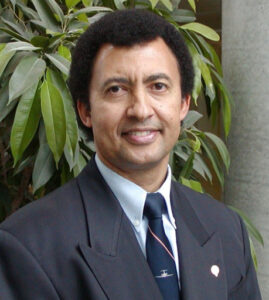
Alouette-I scientific satellite
Image Credit: https://www.asc-csa.gc.ca/eng/satellites/alouette.asp
In the late 1950s, Canada and the US agreed to collaborate on satellite technology, after NASA was created as a civilian agency to take over the American space race. Canada’s Defence Research Telecommunications Establishment (DRTE) proposed a satellite to study the ionosphere including the aurora borealis (Northern Lights) which often disrupted high frequency (HF) radio transmissions in the North.
The Alouette 1 satellite established Canada as the third nation in space after the Soviet Union and the United States when it was launched in September 1962. DRTE developed the electronics for the satellite and contracted the “Special Products” division of de Havilland Aircraft of Canada (DHC) headquartered in the company’s old factory inside the RCAF Downsview air base to build the airframe and the antennas. Originally founded as DHC’s Guided Missile Division, it had a hand in the development of missile systems for the ill-fated Avro Arrow.
Expanding on work done by George Klein at the National Research Council, DHC developed four STEM (Storable Tubular Extendable Member) antennas for Alouette 1 which were 23 and 45 m in length which would coil in and out of deployment mechanism like a carpenter’s measuring tape.
The STEM became Canada’s first space technology product. DHC’s Special Products and its successor SPAR (Special Products Applied Research) sold more than 1,000 STEMs for use by the US space program (on the Mercury, Gemini and Apollo capsules) and on hundreds of satellites.
SPAR teamed with RCA Victor Canada to develop Alouette 2 (launched in 1965) followed by ISIS (International Satellites for Ionospheric Studies) 1 (1969) and 2 (1971).
In the late 1960s, Telesat Canada Corp then contracted Hughes Aircraft to develop the Anik A1, A2 and A3 communication satellites and SPAR and Northern Electric became the main subcontractors. SPAR also built the Communications Technology Satellite (CTS) known as Hermes which launched in 1976.
In 1975, Canada agreed to participate in the NASA shuttle program and agreed to find the development of Remote Manipulator Arm (Canadarm) which incorporated SPAR’s STEM technology as an actuator. The system was considered more complex than a CANDU nuclear reactor or the Avro Arrow, which were the engineering benchmarks in Canada at the time. In 1977, SPAR purchased the space assets of RCA Canada and Northern Telecom which provided it with the critical mass to be selected as the prime contractor to build the Anik D satellites for Telesat – the first commercial satellite prime contract awarded to a Canadian company.
– Kenneth Swartz
Today, students from Centennial College, Toronto Metropolitan University, Queens University, McMaster University, York University and the University of Toronto are working together on collaborative DAIR projects, developing skills and helping to build an even stronger aerospace industry for Ontario and Canada.







